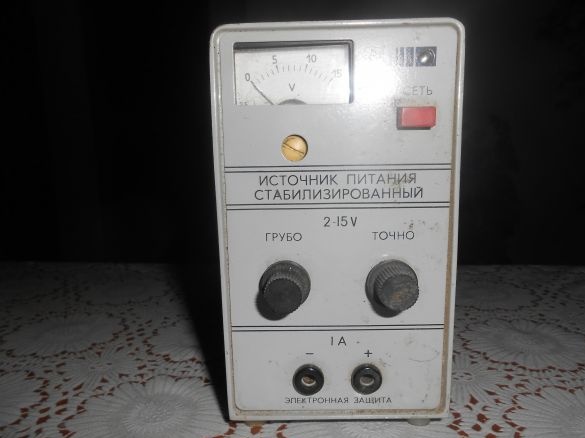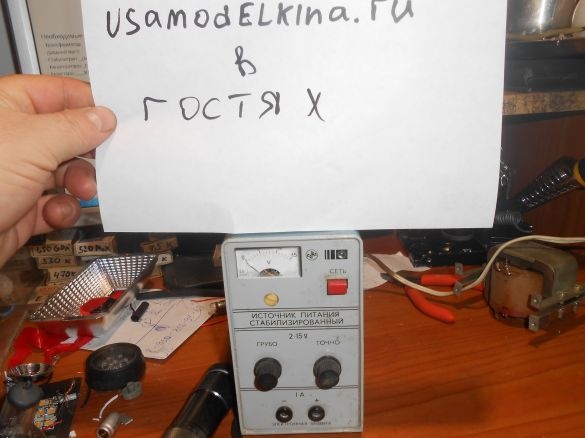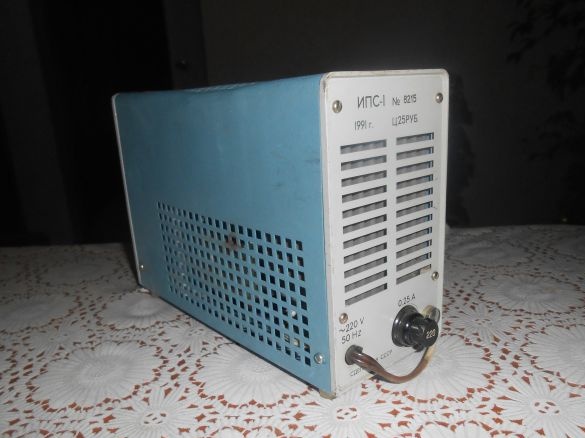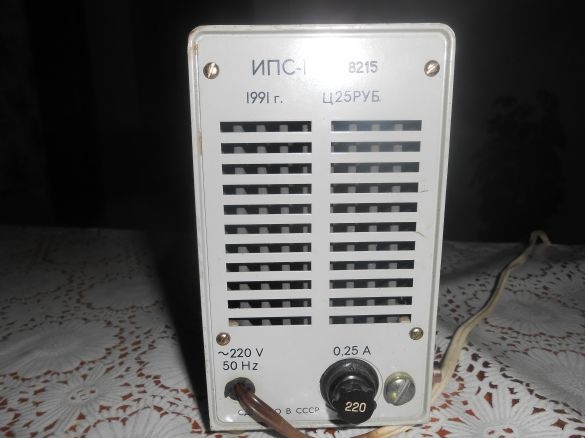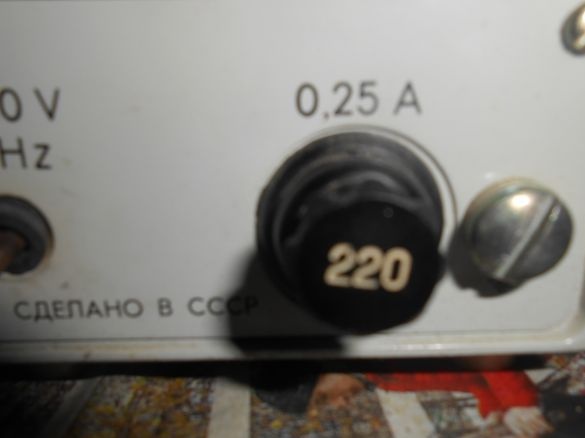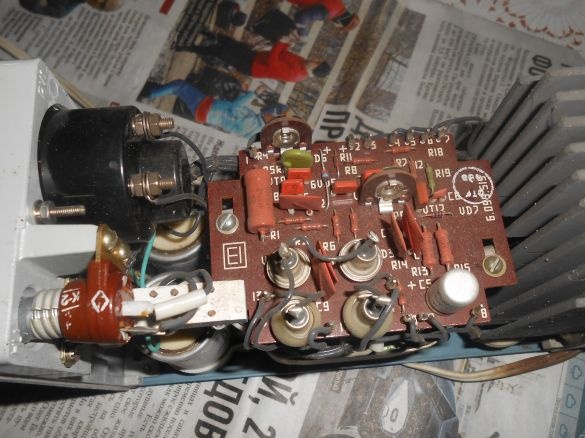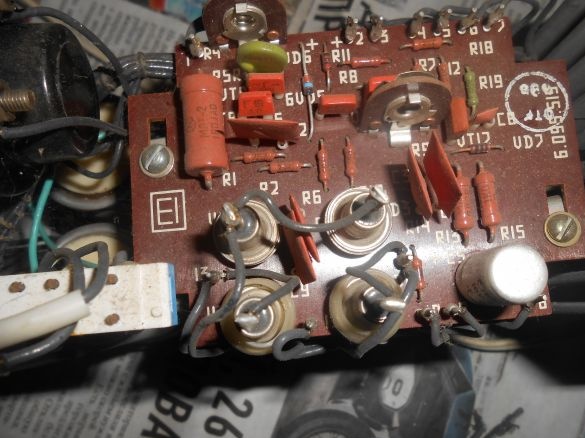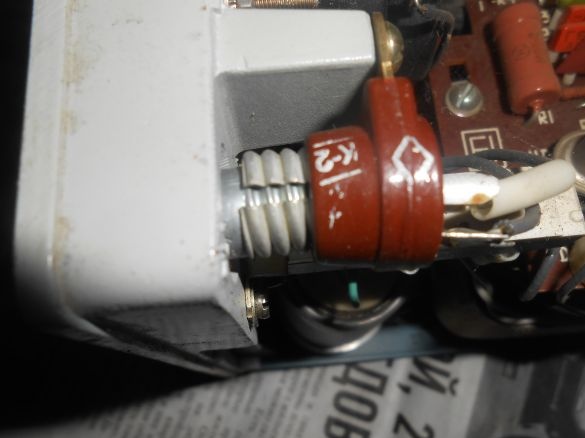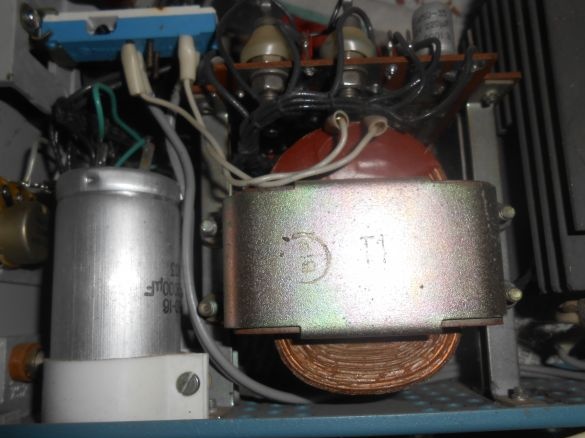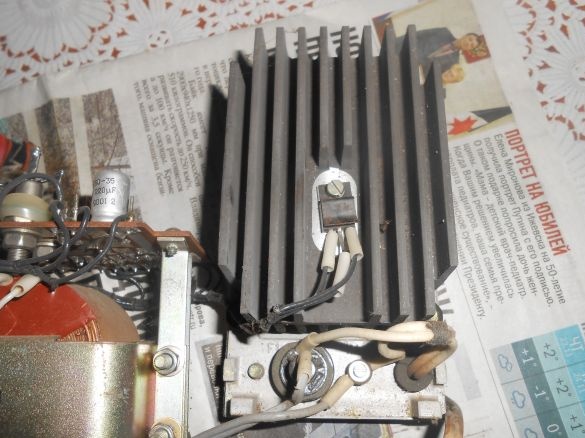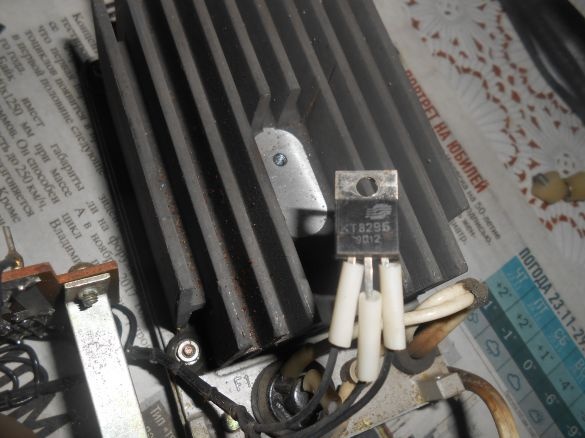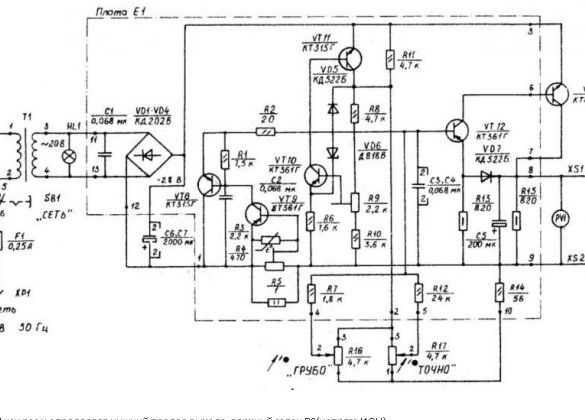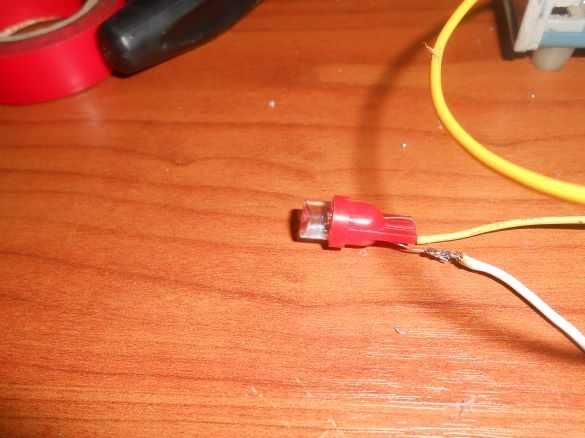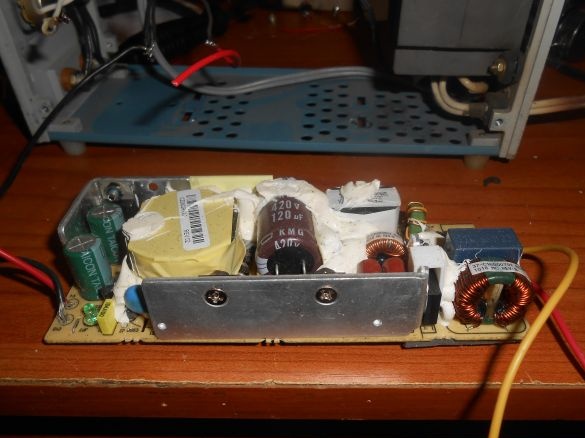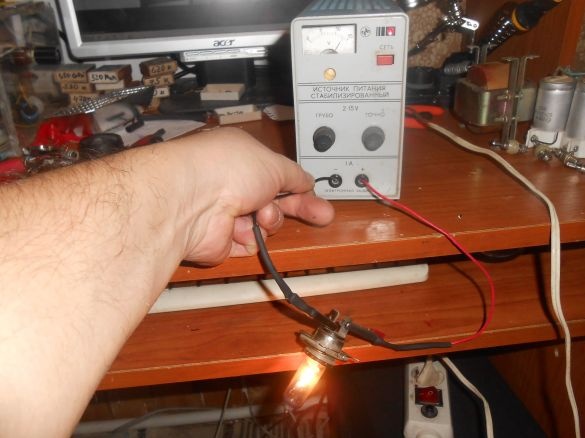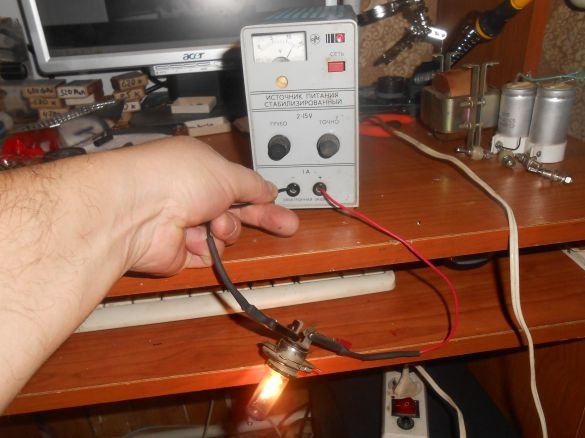IPS-1 modernization.
I fell into the hands of the rarity of Soviet times IPS-1
The power source IPS-1 is a successful product of the Soviet industry.
Adjustable 0-15V (2-15V this modification) source with a current limiting mode of 1A, easily “overclocked” to 1.5 A. Small size, high reliability.
Factory current protection operation up to 1A, output voltage 15V. The overall power of the installed transformer SHL16h32 is 38VA. Thus, the design of this unit has significant reserves, the implementation of which allowed to significantly increase the output power.
Scheme:
If we dismantle the transformer, rectifier, 2 healthy capacitors and plug in the charging from the laptop instead, we can easily get a power supply of twenty volts and five amperes. It all depends on the charging characteristics.
I had a 19 V 4.76 A charger on hand.
We dismantle all unnecessary:
We change the capacitor C5 - 16v 220 mF to the capacitor 2200 mF 25 v (what was)
Light bulb 26 V 0.12 A, 3 W
Replace with a LED from the car shop at 12 volts (comes with a limiting resistor, no calculations need to be made).
The LED is connected through the stabilizer L7812, power is supplied from the output.
A cooler is connected to it for cooling
We remove the charger power supply from the case
We are connected to the network from the IPS and the output from the charger (instead of 2 dismantled capacitors, we install one 2200 mF at 25 volts) according to the scheme:
We assemble and adjust
R14 defines the lower output limit
Upper limit set by R9
vt9-r3, r4-CURRENT LIMITER.
Upper reading limit: 19.7 volts
Lower limit 0 volt
I’m testing an automobile headlight lamp H4 for 24 volts (there is no other at hand ...)
IPS holds 2 amperes without any problems! Check until nothing more.
It remains to wait for the voltmeter ammeter from the Middle Kingdom and the unit will still serve!
The thought came: The current adjustment needs to be brought out, then the 18650 batteries can be charged.
Thanks to all!


